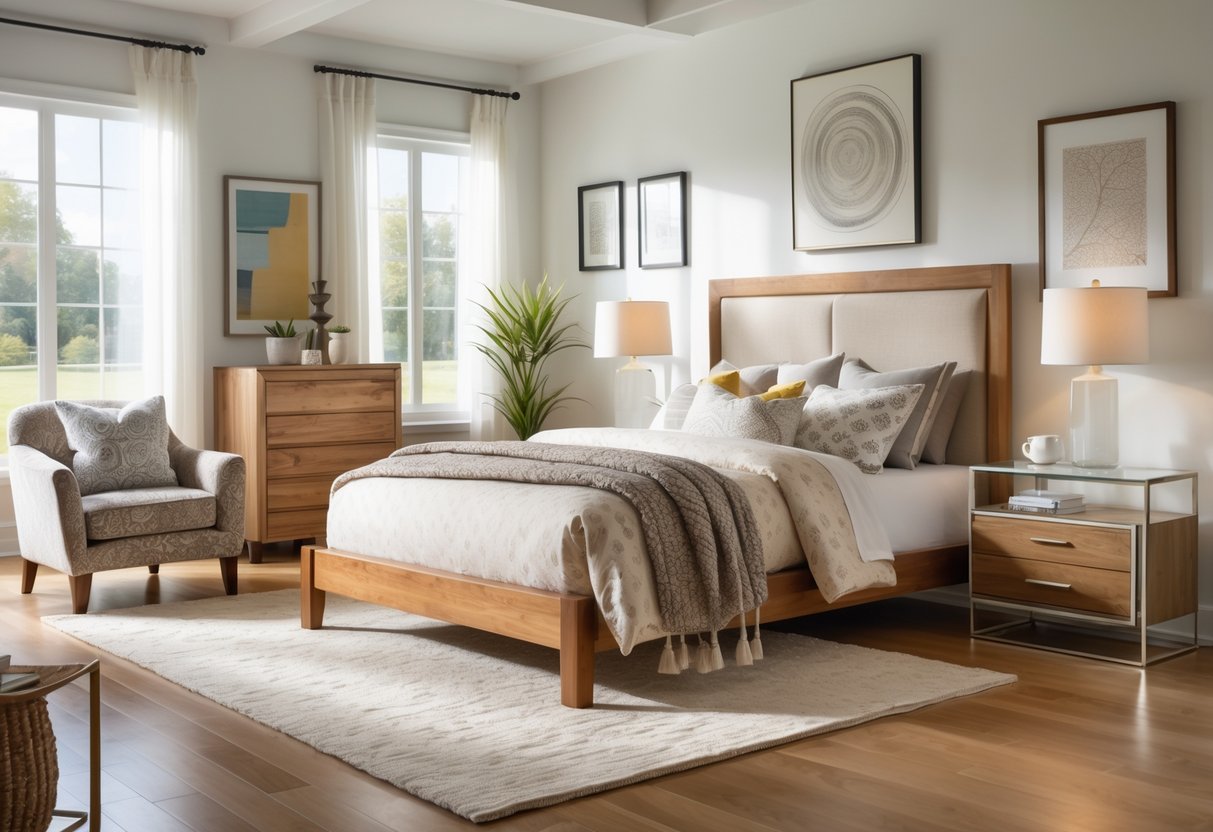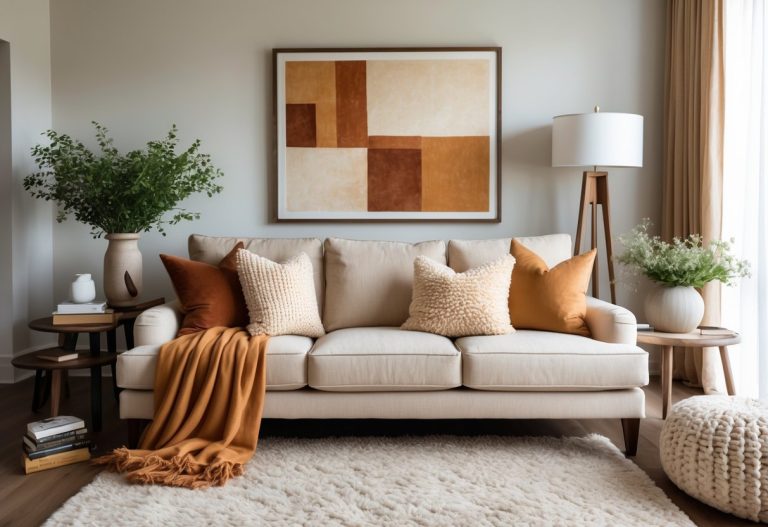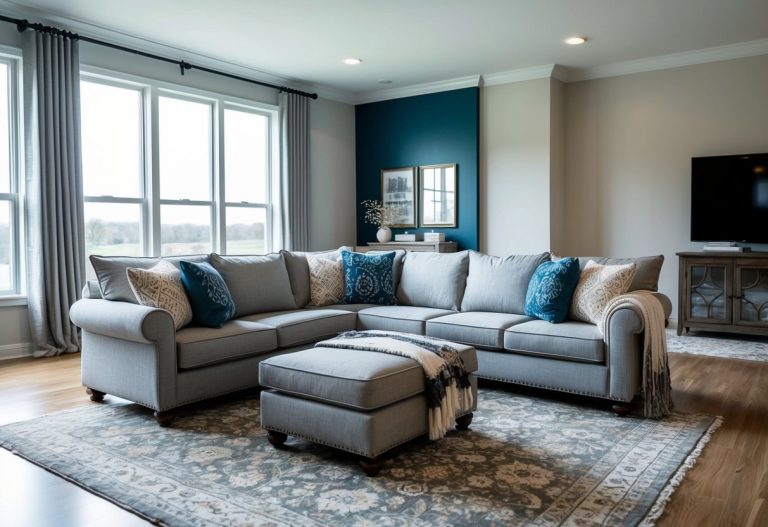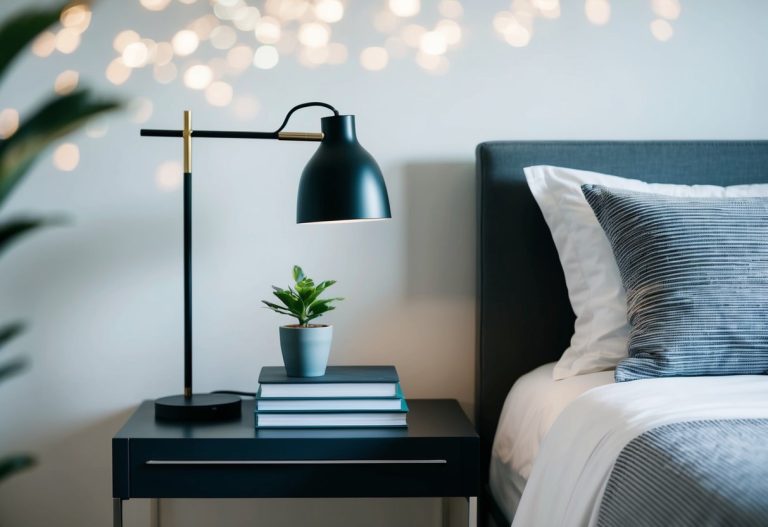How to Mix and Match Bedroom Furniture for a Cozy, Stylish Space
Mixing and matching bedroom furniture can seem tricky, but it’s all about creating balance and harmony. Choose one dominant color or style and then add one or two different pieces that complement it without clashing. This approach helps keep your room looking put together, even when your furniture isn’t all from the same set.
You don’t need to worry about every piece matching perfectly. Instead, focus on keeping the shapes, colors, or materials connected. For example, pairing a wooden dresser with metal nightstands can work well if the colors and tones feel balanced. With a little care, your bedroom can look fresh and personal without feeling chaotic.
Essential Principles for Mixing and Matching Bedroom Furniture

To create a bedroom that feels both interesting and comfortable, focus on how your furniture pieces relate to each other. Pay attention to balance, color, materials, and style to help your room look put together without forcing everything to match perfectly.
Balance and Visual Harmony
Start by looking at the size and weight of your furniture. Mix heavy pieces, like a large dresser, with lighter ones, such as a delicate nightstand. This balance helps the room feel stable and comfortable.
Leave some space around furniture. For example, keep at least 75 cm (about 30 inches) of walking room around your bed. This makes your room easier to move through and avoids a crowded look.
Arrange your furniture so the visual weight is spread evenly. If you have a dark, chunky bed, balance it with lighter or smaller items on the other side of the room. This keeps one side from feeling too “heavy.”
Choosing a Cohesive Color Palette
Pick 2-3 main colors for your bedroom furniture to create unity. You don’t have to match exactly, but picking colors that work well together will make your space feel calm and planned.
Neutral colors like beige, gray, or white are easy to mix with brighter shades like navy or mustard. Use your bed frame as a base color, then choose other pieces that either match it or complement it.
Try to keep metallic finishes in the same tone — for example, all brushed nickel or all gold — to avoid clashing details. This small step can make a big difference.
Incorporating Different Materials and Textures
Using a variety of materials keeps your bedroom interesting. Combine solid wood with metal or glass, for example. This adds depth to the design without looking random.
Think about texture too. Smooth wood and shiny metal paired with soft fabrics like a knitted throw or velvet pillows create a nice contrast. This can make your space more inviting.
Avoid too many similar textures. If your dresser is rough wood, balance it with a smooth nightstand or a fabric-covered chair.
Blending Styles and Eras
You don’t need furniture from the same time or style. Mixing modern and vintage pieces can create a unique look that feels personal.
Choose one style as your base, like modern, and add a few items from a different era, like rustic or mid-century. This adds character but stays coherent.
Keep the room unified by repeating small details, such as the material or color, in different pieces. This helps pull everything together even if styles don’t perfectly “match.”
Practical Tips and Creative Ideas for Your Bedroom

To create a balanced bedroom, focus on choosing main furniture pieces that set the tone, adding unique accent items to express your style, and making sure everything fits well while serving a purpose. Small decisions here can make the entire room feel connected and functional.
Coordinating Anchor Pieces
Start with the bed since it usually dominates the room. Pick a style and color that you really like, as it will guide your choices for other furniture. For example, if your bed has a dark wood frame, consider dressers and nightstands in similar tones to keep things connected.
You don’t have to match everything exactly, but pieces with shared colors or materials help tie the room together. Using the same wood finish or metal accents in multiple items adds harmony without being boring.
Also, think about scale and shape. If your bed is big and solid, choose dressers and chairs that fit its size rather than furniture that’s too small or too bulky.
Accent Furniture and Statement Pieces
Add personality with accent furniture like a colorful chair, a patterned bench, or a vintage nightstand. These pieces don’t need to match but should feel like they belong with the rest of the room. Use color, texture, or style to link them in.
For example, a velvet chair in a soft color can stand out next to solid wood furniture, creating interest. A bold lamp or unique mirror on a simple dresser draws the eye and adds flair.
Try mixing textures like wood, metal, fabric, or glass. This contrast makes the room feel finished and thoughtful without cluttering it.
Maximizing Space and Functionality
When mixing furniture, plan for enough space to move around comfortably. Keep pathways clear and avoid overcrowding. Use multi-use pieces like ottomans with storage or desks that double as vanity tables.
Look for furniture that fits your bedroom’s size. Large rooms allow for bigger furniture, while smaller rooms benefit from slim, vertical storage.
Place items so they serve your daily needs — like having your nightstand near your bed or a dresser close to your closet. This keeps the space both attractive and practical.





